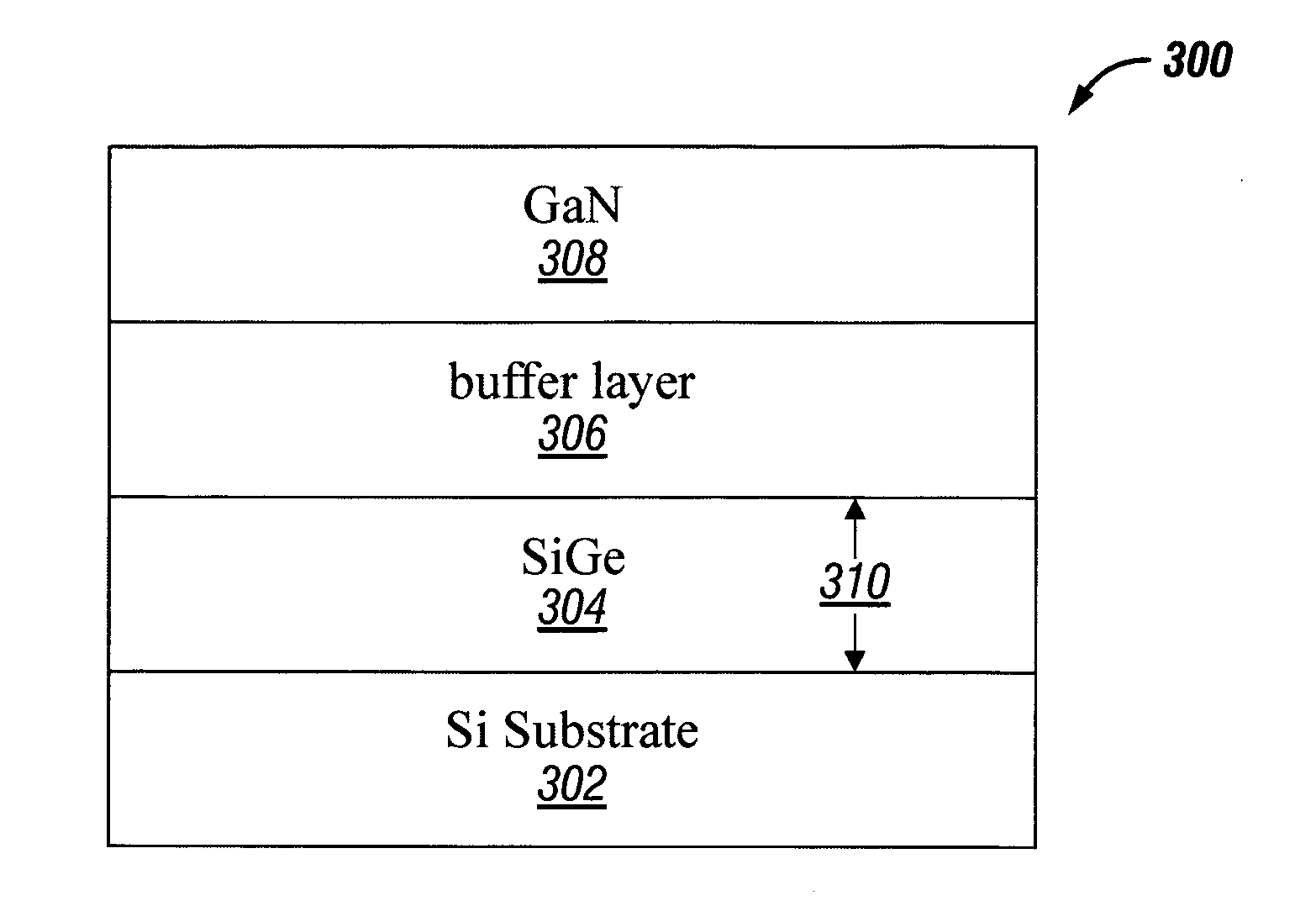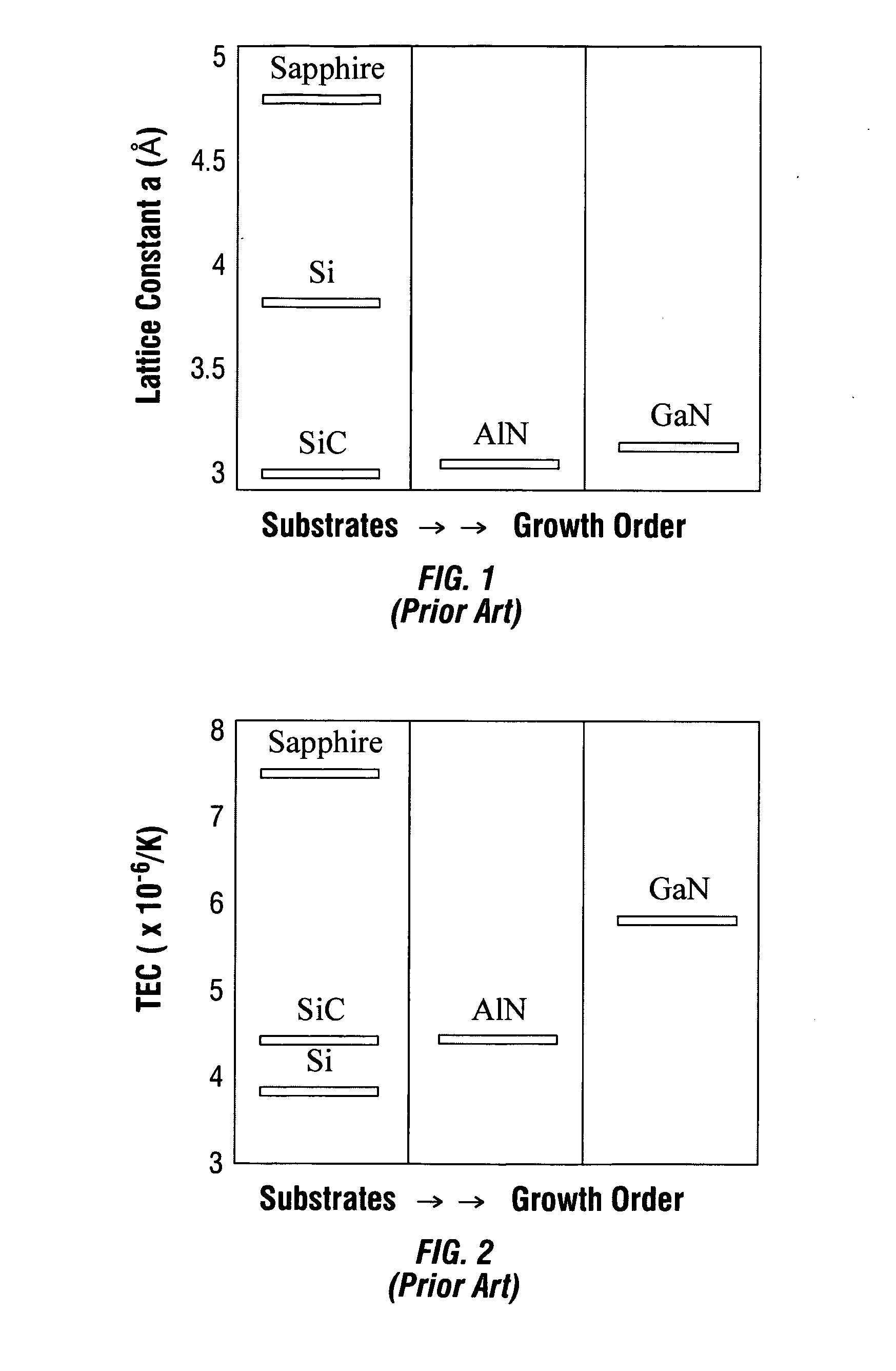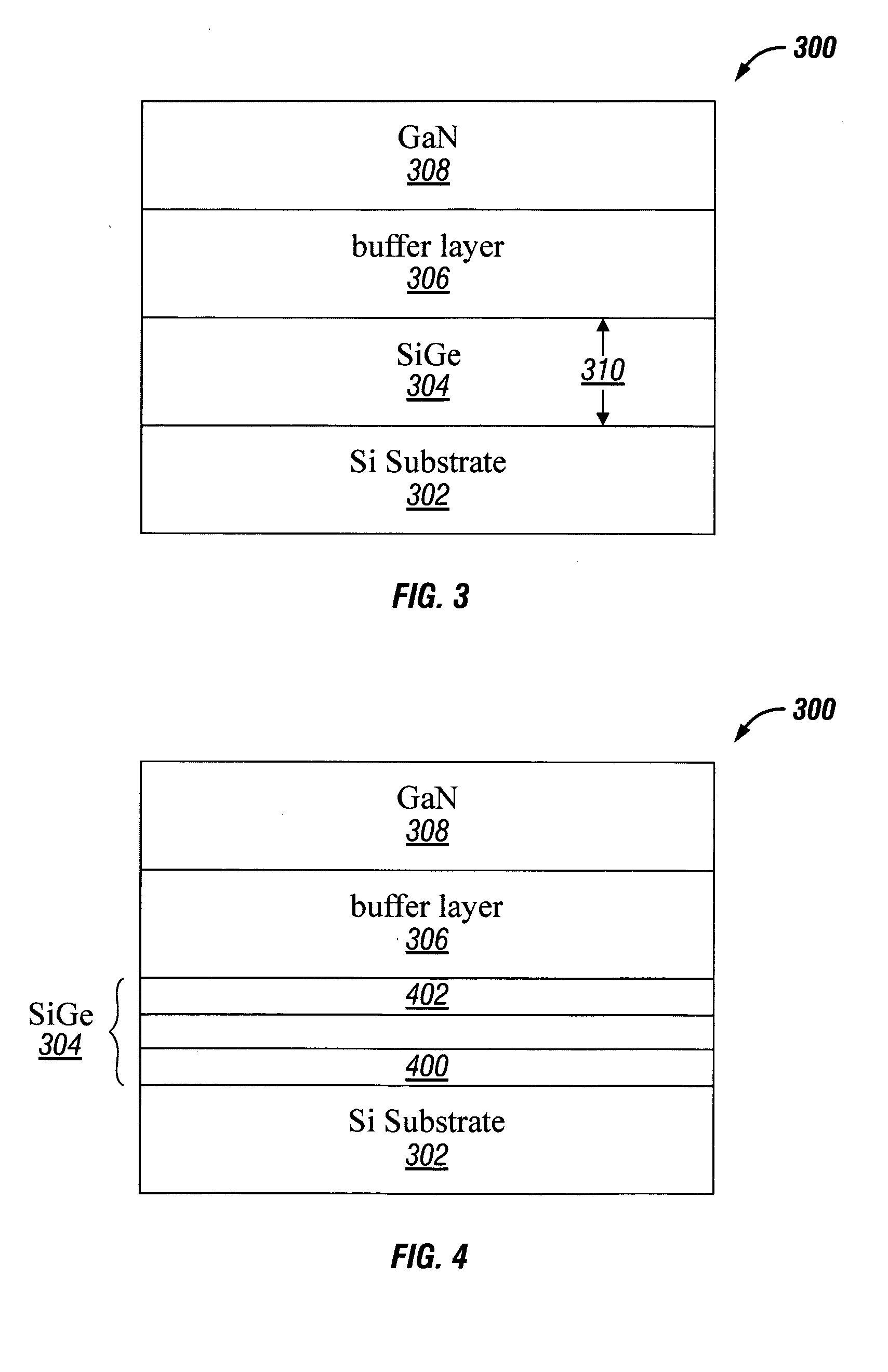Gallium nitride on silicon with a thermal expansion transition buffer layer
- Summary
- Abstract
- Description
- Claims
- Application Information
AI Technical Summary
Benefits of technology
Problems solved by technology
Method used
Image
Examples
Embodiment Construction
[0029]FIG. 3 is a partial cross-sectional view of a gallium nitride (GaN)-on-silicon (Si) structure with a thermal expansion interface. The structure 300 comprises a (111) Si substrate 302 with a first thermal expansion coefficient (TEC). A silicon-germanium (SiGe) film 304 overlies the Si substrate 302. A buffer layer 306 overlies the SiGe film 304. For example, the buffer layer 306 may be either aluminum nitride (AlN) or aluminum-gallium nitride (AlGaN). However, other buffer layer materials are known in the art, that although less desirable in some circumstances, may also be used. A GaN film 308 overlies the buffer layer 306, having a second TEC. The SiGe film 304 has a third TEC, with a value in between the first and second TECs.
[0030]Generally, the SiGe film 304 may have a thickness 310 in the range of about 200 nanometers (nm) to 4 micrometers. In one aspect, the SiGe film 304 has a non-varying Ge content in a range of about 10 to 50%, and a thickness 310 in a range of about 1...
PUM
 Login to View More
Login to View More Abstract
Description
Claims
Application Information
 Login to View More
Login to View More - R&D
- Intellectual Property
- Life Sciences
- Materials
- Tech Scout
- Unparalleled Data Quality
- Higher Quality Content
- 60% Fewer Hallucinations
Browse by: Latest US Patents, China's latest patents, Technical Efficacy Thesaurus, Application Domain, Technology Topic, Popular Technical Reports.
© 2025 PatSnap. All rights reserved.Legal|Privacy policy|Modern Slavery Act Transparency Statement|Sitemap|About US| Contact US: help@patsnap.com



